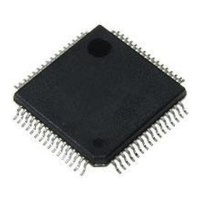System Debug
ARM DDI 0337G Copyright © 2005-2008 ARM Limited. All rights reserved. 11-3
Unrestricted Access Non-Confidential
11.2 System debug access
Debug control and data access occurs through the Advanced High-performance
Bus-Access Port (AHB-AP) interface. This interface is driven by either the Serial Wire
Debug Port (SW-DP) or Serial Wire JTAG Debug Port (SWJ-DP) components. See
Chapter 13 Debug Port for information on the SW-DP and SWJ-DP components.
Access includes:
• The internal PPB. Through this bus, the debugger can access components,
including:
— Nested Vectored Interrupt Controller (NVIC). Debug access to the
processor core is made through the NVIC. For details, see Chapter 10 Core
Debug.
—DWT unit.
— FPB unit.
—ITM.
— Memory Protection Unit (MPU).
Note
During a system reset the debugger can read all registers within the PPB space. It
can also write to registers within the PPB space that are only reset by a power on
reset.
• The External Private Peripheral Bus. Through this bus, debug can access:
— ETM. A low-cost trace macrocell that supports instruction trace only. See
Chapter 14 Embedded Trace Macrocell for more information.
— Trace Port Interface Unit (TPIU). This component acts as a bridge between
the Cortex-M3 trace data (from the ITM, and ETM if present) and an
off-chip Trace Port Analyzer. See Chapter 17 Trace Port Interface Unit for
more information.
—ROM table.
• The DCode bus. Through this bus, debug can access memory located in code
space.
• The System bus. Provides access to bus, memory, and peripherals located in
system bus space.
Figure 11-1 on page 11-4 shows the structure of the system debug access, and shows
how the AHB-AP can access each of the system components and external buses.

